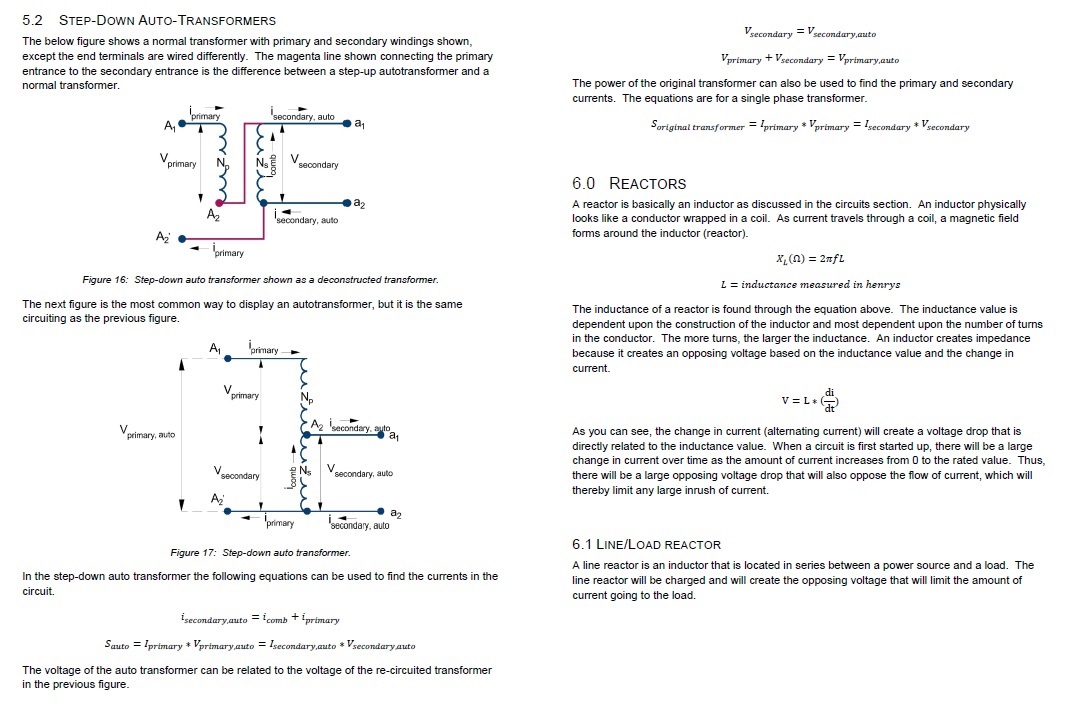applepieordie
Active member
- Joined
- Feb 21, 2017
- Messages
- 28
- Reaction score
- 0
Can someone please explain the solution to me?
Question:
A wye-wye, 230 kV, 3-ph transmission line is being stepped down to 200 kV using three autotransformers connected between the neutral and the line. For each phase, if the autotransformer is rated for 500 MVA, and the turns ratio is 5:2 (common:series) what is the apparent power in the common coil?
Their Solution:
(Nc/Ns) = (5/2), S = 500 MVA
(S/Sc) = (Ns+Nc)/Ns = 1+(Nc/Ns)
Sc = S/ (1+(Nc/Ns)) = 500MVA/ (1+(5/2)) = 143 MVA
To me it seems like they solved for the apparent power in the series coil. Or am I thinking about this wrong? please help.
Question:
A wye-wye, 230 kV, 3-ph transmission line is being stepped down to 200 kV using three autotransformers connected between the neutral and the line. For each phase, if the autotransformer is rated for 500 MVA, and the turns ratio is 5:2 (common:series) what is the apparent power in the common coil?
Their Solution:
(Nc/Ns) = (5/2), S = 500 MVA
(S/Sc) = (Ns+Nc)/Ns = 1+(Nc/Ns)
Sc = S/ (1+(Nc/Ns)) = 500MVA/ (1+(5/2)) = 143 MVA
To me it seems like they solved for the apparent power in the series coil. Or am I thinking about this wrong? please help.




